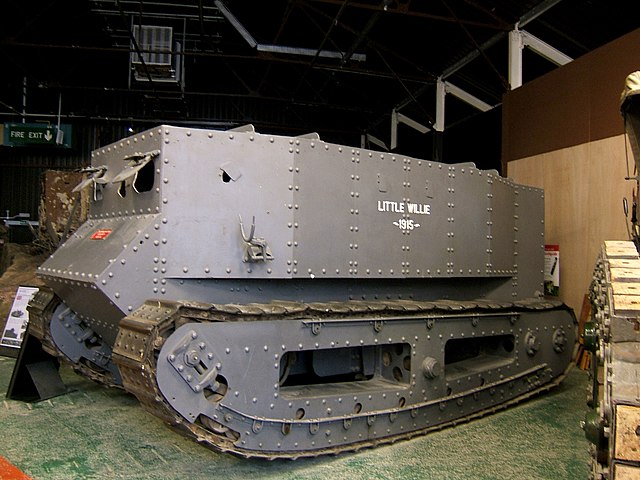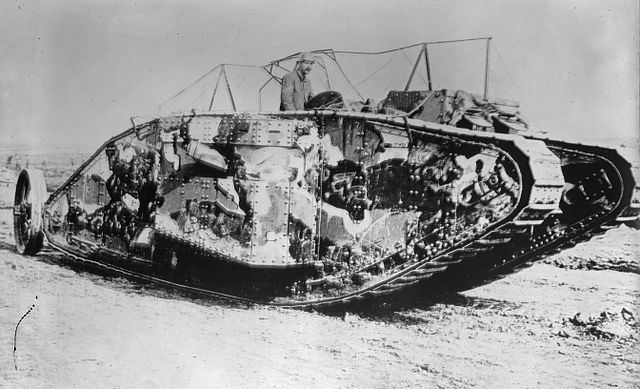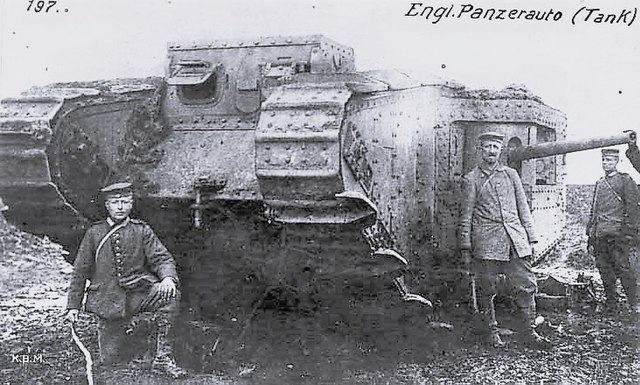Little Willie was a prototype in the development of the British Mark I tank. Constructed in the autumn of 1915 at the behest of the Landship Committee, it was the first completed tank prototype in history. Little Willie is the oldest surviving individual tank, and is preserved as one of the most famous pieces in the collection of The Tank Museum, Bovington, England.
Little Willie at the Tank Museum, Bovington (2006)
The No1 Lincoln Machine, with lengthened Bullock tracks and Creeping Grip tractor suspension, September 1915
Little Willie showing its rear steering wheels, September 1915
British heavy tanks of the First World War
British heavy tanks were a series of related armoured fighting vehicles developed by the UK during the First World War. The Mark I was the world's first tank, a tracked, armed, and armoured vehicle, to enter combat. The name "tank" was initially a code name to maintain secrecy and disguise its true purpose. The tank was developed in 1915 to break the stalemate of trench warfare. It could survive the machine gun and small-arms fire in "no man's land", travel over difficult terrain, crush barbed wire, and cross trenches to assault fortified enemy positions with powerful armament. Tanks also carried supplies and troops.
A British Mark I "male" tank near Thiepval on 25 September 1916, fitted with wire mesh to deflect grenades and the initial steering tail, shown raised. Photograph by Ernest Brooks
The Mark IV tank Lodestar III at the Belgian Royal Museum of the Army, Brussels (2005). This tank retains its original paint.
British Mark I tank with the Solomon camouflage scheme
Mark II; tank no. 799 captured near Arras on 11 April 1917







